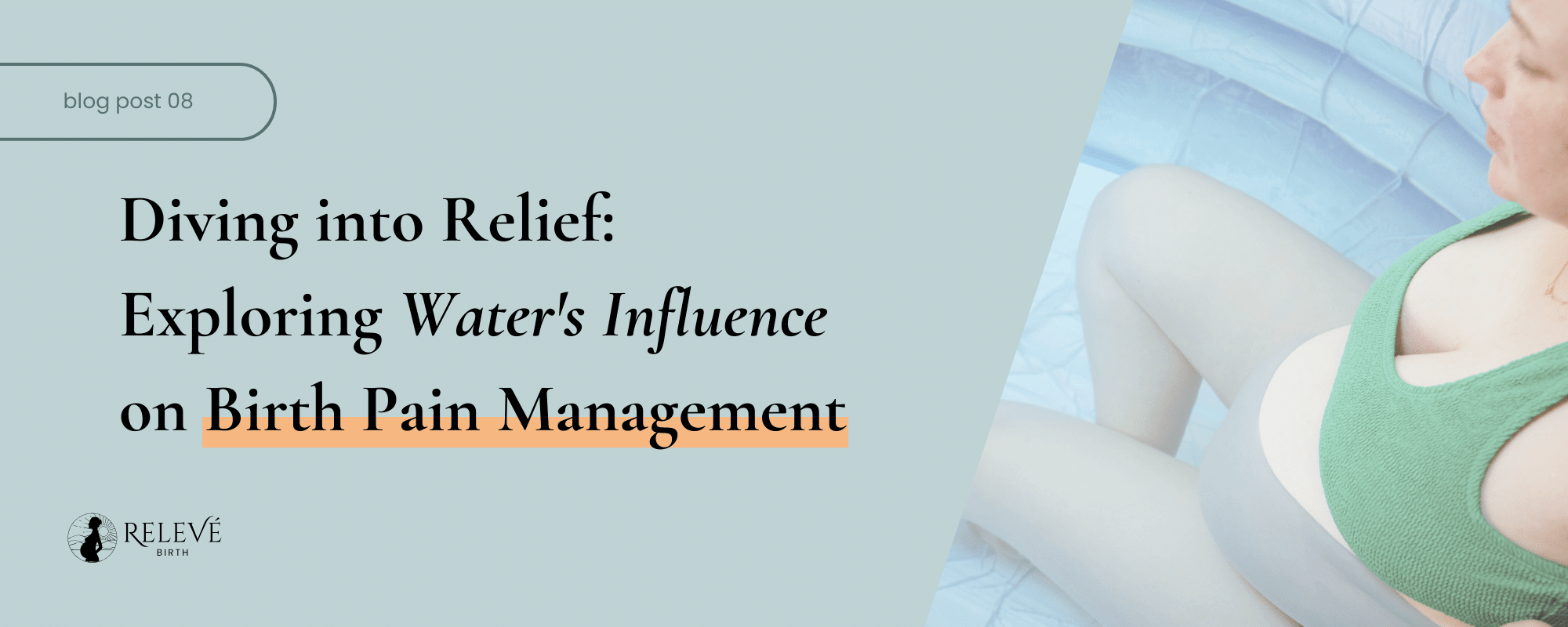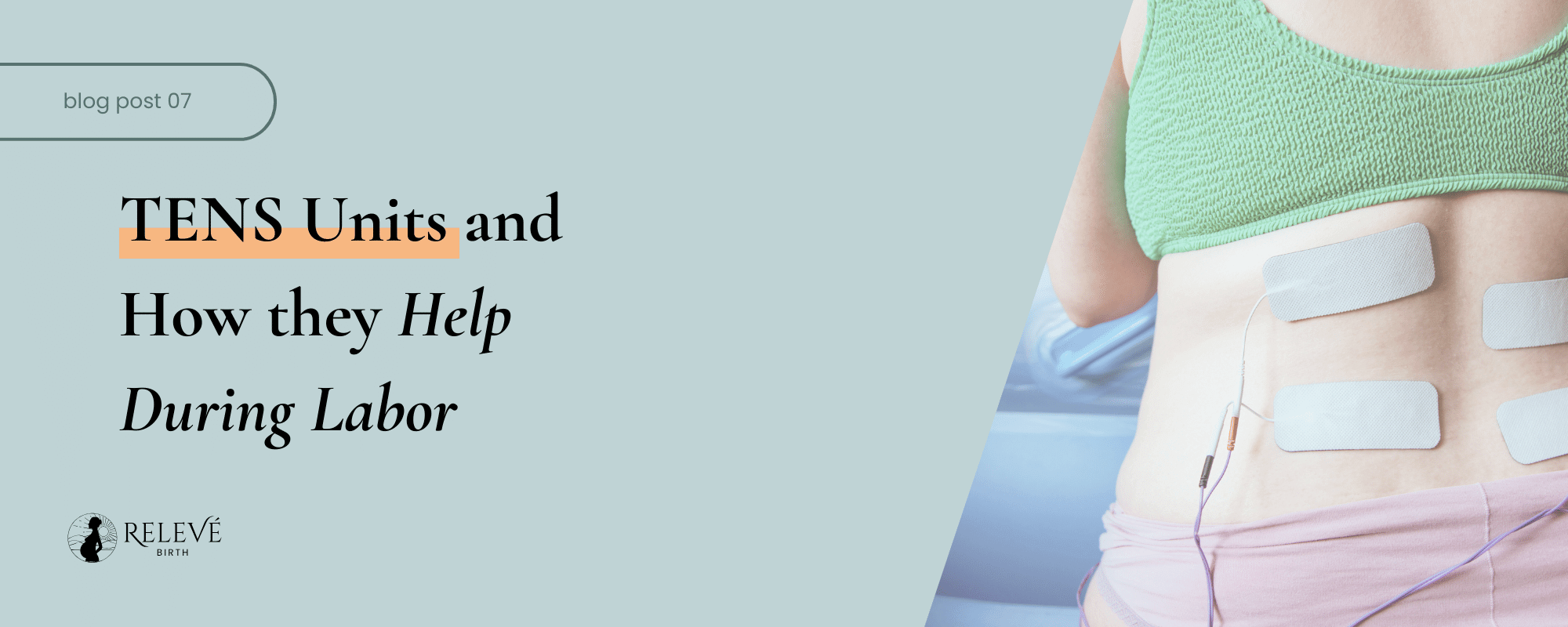Diving into Relief: Exploring Water's Influence on Birth Pain Management
Close your eyes and imagine yourself floating weightlessly, and surrounded by warm, soothing water. That's the beauty of water therapy in labor – a blissful escape from the chaos of childbirth, where peace and tranquility reign supreme. So grab your towel and take the plunge with me as we explore the restorative wonders of aquatic pain relief.
This week’s post is all about water and how it can be used for pain management during labor and birth. I’ll discuss hydrotherapy also called water immersion or water therapy, what it is and how it can help with pain management. Let’s dive in!
What is Hydrotherapy?
Hydrotherapy is gaining popularity in the world of birth, especially in births taking place outside of a hospital. With its increasing popularity some hospitals have added tubs to their birth suites (Yay!) What is hydrotherapy exactly? Well let’s think of a time when you had a really great workout and your muscles were sore. Did you perhaps take a shower or soak in the tub to help alleviate that discomfort? That is hydrotherapy in a nutshell.
Hydrotherapy is immersion in warm water, in our case during labor. It can be used at any part of labor all the way to pushing and birth. I should note that there is a difference between hydrotherapy and waterbirth. Some women and their providers decide that a land birth is the best choice for them and so they may labor in water for the relief and comfort but when it comes to birth they move out of the water.
Benefits of Hydrotherapy in Labor Pain Management:
Natural Pain Relief: The warm water of a birthing pool provides natural pain relief by promoting relaxation, reducing muscle tension, and stimulating the release of endorphins.
Increased Mobility: Buoyancy in water allows mothers to move more freely and find comfortable positions, facilitating labor progress and easing discomfort.
Reduced Need for Medical Interventions: Studies have shown that water immersion during labor is associated with lower rates of epidural use, instrumental deliveries, and cesarean sections.
Enhanced Relaxation: Immersion in water creates a calming and serene environment, allowing mothers to feel more relaxed and in control during labor.
Greater Satisfaction: Women who choose water immersion during labor often report higher levels of satisfaction with their birth experience, feeling empowered and supported throughout the process.
Hydrotherapy can be combined with certain other non-medical pain management tools but not others. For example you can use a birth comb in the water. You can couple relaxation techniques like meditation or focused breathing with hydrotherapy. Other tools like a TENS unit cannot be used in the water.
Research Supporting Water Birth:
Numerous studies have examined the benefits of water birth and immersion during labor. A study in 2012 examined the effects of immersion in water on labor, birth and the newborn. This study compared women having water birth, conventional vaginal births and vaginal births with epidurals. The length of each stage of labor, induction and episiotomy requirements, perineal trauma, apgar scores and NICU requirements were all analyzed.
The results showed that the 1st stage of labor was shorter in water births compared with vaginal births with epidurals. The 2nd and 3rd stages of labor were shortest in women having water birth compared to the others. The women having water births also had less requirements for induction or episiotomies, but had more perineal laceration. The women having water births all had reduced need for pain management medication. There was no difference in regards to NICU admissions between the groups.
Another study indicated that women who chose to use water therapy during labor often had a positive association with the choice. Their experience using water therapy enhanced their sense of autonomy and control during the birthing experience. The result was a more empowering experience and higher satisfaction.
Incorporating Water Immersion Into Your Birth Plan:
If you're considering water immersion as a pain management option during labor, it's essential to share your preferences with your healthcare provider or midwife. They can provide guidance on the safe use of water immersion, monitor your progress, and ensure that you and your baby are healthy and well-supported throughout the birthing process.
If you are birthing in a space without a tub you can also have similar benefits from warm showers, and many hospital rooms have showers in them. Warm showers can relieve pain and discomfort while also encouraging mom to stay upright and shift positions, which allows for the baby to continue their movement down and through the pelvis.
Take the Plunge!
Water immersion offers a gentle and effective approach to pain management during labor, providing mothers with a natural and empowering way to navigate the waves of contractions. Backed by research and supported by countless women who have experienced its benefits firsthand, water immersion as pain management continues to make waves in the world of childbirth, offering an atmosphere of peace and comfort to expectant mothers everywhere.
Disclaimer: This is not medical advice. Please discuss all medical concerns with your care provider. This content is for educational and informational purposes only.
Welcome to the Relevé Birth Blog!
Here we explore the incredible journey of motherhood. Join me as we delve into empowering insights, easy movement tips and holistic approaches to pregnancy, birth and postpartum.
You Might Also Like…
Thanks for reading!
Hi, I’m Sierra, a doula with a passion for physiological birth. My mission is to help moms, like you, gain the confidence to wholeheartedly trust their bodies to bring their babies into the world.
Join the movement to a better birth.






